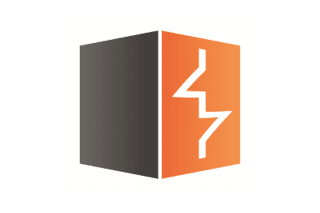Content
Meaning
Pentesting tools are used as part of pentesting to automate certain tasks, improve testing efficiency and uncover issues that are difficult to detect using manual analysis techniques alone. Once threats and vulnerabilities are assessed, pentesters provide a report that allows the organization to address the identified risks to improve their Cybersecurity.
Pentest tools are important for security testing in modern, large-scale IT environments. They enable asset discovery in complex, hybrid environments and can help testers evaluate systems against security benchmarks and compliance requirements. While no single tool can replace the ingenuity of a talented pentester, tools can extend and deepen the scope of pentests, providing better results.
Types of pentesting tools
A toolkit for pentesting should include a variety of tools. Some general categories of tools are:
Port scanners: identify open ports on the system. This helps testers identify the operating system and applications currently running on a network they are trying to access. Port scanners are used in reconnaissance and can provide ideas for potential attack vectors.
Vulnerability scanners: look for known vulnerabilities in servers, operating systems and applications, as well as misconfigurations that can be exploited in a test. Reports from vulnerability scanners help penetration testers select a vulnerability that can be exploited and allow them to initially gain access to the system.
Network sniffer - monitors information in network traffic, including the source, destination, devices communicating on the network, protocols and ports used. This can be useful to verify that data is encrypted and to identify communication paths that could be misused during penetration testing.
Web proxy - allows penetration testers to intercept and modify traffic between their browser and an organization's Web servers. This makes it possible to detect hidden form fields and other HTML features that could enable attacks such as cross-site scripting (XSS) or cross-site request forgery (CSRF).
Password crackers - password hashing is a common target for attackers as a means of escalating privileges on a target system or network. Password crackers allow penetration testers to determine whether an organization's employees are using weak passwords that pose a risk of misuse.
Want to know more about pentesting?
Don't hesitate to contact us; we would be happy to tell you more about everything concerning Cybersecurity.

The 10 best tools for pentesters
1. Kali Linux

License: open source
GitHub Repo: -
Kali Linux is an operating system that enables pentesting, security performances and related activities. It is a Linux distribution based on Debian, which is offered as open source and maintained by Offensive Security.
Kali Linux includes the following tools (some of which are covered separately in our list):
- Armitage - graphical tool for managing network attacks
- Nmap -portscanner
- Wireshark - packet analyzer
- Metasploit -penetration test frame with thousands of exploit modules
- John the Ripper - crackpot
- sqlmap - automated SQL injection and database importing
- Aircrack-ng - Software suite for wireless LAN pentesting
- OWASP ZAP - Security scanner for web applications
- Burp suite - application security tests
2. Burpsuite

License: free and paid options
GitHub Repo: https://github.com/PortSwigger
Burp Suite is a suite of application security testing tools developed by Portswigger. The suite includes the popular proxy Burp Proxy.
Burp Proxy allows pentesters to perform attacks between a Web server and a browser by people in the middle wall. They make it possible to inspect network traffic, which can help detect and exploit vulnerabilities and data leaks in Web applications.
Features of Burp Suite:
- Use a dedicated client to perform manual testing for out-of-band vulnerabilities.
- Testing and confirming clickjacking attacks with specialized tooling.
- Assessment of token strength by testing the quality of randomness in token data items.
- Deep manual testing, allowing to see reflected or stored inputs to test for XSS and similar vulnerabilities.
- Records the results of automated attacks and allows testers to refine them in subsequent attacks.
- Enables faster brute-forcing and fuzzing with custom sequences of HTTP requests with multiple payload sets.
- Constructs build CSRF exploits, making it possible to use HTML that demonstrates a CSRF attack for an appropriate request.
3. Zed Attack Proxy

License: open source
GitHub Repo:https://github.com/vanhauser-thc/thc-hydra
In practice, ZAP is a free and open-source variant of Burpsuite. As the name suggests, ZAP sits between the browser and the Web site being tested. This makes it easier to intercept traffic, which is why a tool like ZAP is also known as a man in the middle. The tester can then inspect and modify this traffic.
It lacks many of the bells and whistles of Burp, but its open-source license makes it easier and cheaper to deploy on a large scale, and it is an excellent beginner tool for learning how vulnerable Web traffic really is.
4. Wireshark

License: free and paid options
GitHub Repo: https://github.com/wireshark/wireshark
Wireshark is a network monitoring solution that captures and analyzes network traffic across different communication channels. Penetration testers can automatically read real-time data from various types of networks, such as Ethernet, token ring, loopback and ATM (Asynchronous Transfer Mode) connections.
IT professionals can capture packet data from live networks and analyze packets in the captured files through a graphical user interface (GUI). With Wireshark, users can modify captured files using command-line switches, apply complex filters and create plugins to analyze new protocols. It is also possible to create modelines to modify configuration files in real time.
Wireshark allows pentesters to investigate security problems in a network, identify malfunctioning network elements that could be used in an attack, and detect protocol implementation or configuration errors.
Additional features include:
- Data encryption
- Compliance management capabilities
- Server monitoring and alerts
- Data import/export
5. Hydra

License: open source
GitHub Repo:https://github.com/vanhauser-thc/thc-hydra
John the Ripper's companion, Hydra, springs into action when you need to crack a password online, such as an SSH or FTP login, IMAP, IRC, RDP and more. Point Hydra at the service you want to crack, give it a word list and pull the trigger.
Tools like Hydra remind us why limiting password attempts and disconnecting users after a handful of login attempts can be successful defenses against attackers.
6. Nmap

License: open source
GitHub Repo:https://github.com/nmap/nmap
Nmap is a free utility used for assessing and investigating network security. It supports Linux, Windows, Solaris, HP-UX, BSD variants including Mac OS and AmigaOS. It provides both a CLI and GUI interface.
Penetration testers can use Nmap to understand what hosts they can access on a network, what services they are accessing, what frameworks they are running and what types of bundled tunnels or firewalls are in use.
Common tasks that can be performed via Nmap include:
- Discovering networking resources
- Checking for open ports
- Oversee network management tasks
- Host uptime observe
7. John the Ripper

License: open source
GitHub Repo: https://github.com/openwall/john
John the Ripper is a free password cracking program that supports 15 operating systems, including 11 from the Unix family, DOS, Win32, BeOS and OpenVMS.
The tool is customizable password cracker with many options for password testing, including:
- Automatic detection of password hash types.
- Broad support for encrypted password formats including Unix crypt hashes, Kerberos AFS tokens and Windows LAN Manager (LM) hashes.
- Ability to crack password encryption based on DES, MD5, Blowfish and MD4.
- Support for password hashes and passwords stored in databases and directory systems such as LDAP and MySQL.
8. Hashcat

License: open source
GitHub Repo:https://github.com/hashcat/hashcat
Hashcat is a popular password cracker that can crack very complex representations. It does this by combining several highly effective password cracking methods.
The main technique used by Hashcat is to manipulate hash keys generated by algorithms such as MD5, SHA, WHIRLPOOL, RipeMD, NTMLv1 and NTMLv2. These are one-way functions that are difficult to reverse.
Hashcat converts readable data into a hashed state and attempts to use various methods, including dictionaries, rainbow tables and brute force techniques, to identify a hash that matches a discovered hash of a password and thus crack the password.
9. Invicti

License: Commercial
GitHub Repo: -
Invicti is provided both as a cloud service and an on-premises service location. It provides automated application vulnerability assessment, which can help pentesters identify potential vulnerabilities in Web sites.
Invicti runs a Chrome-based crawler to find vulnerabilities in a variety of Web assets, including dynamic Web applications, HTML5 Web sites and single-page applications, and can also scan authenticated Web sites by entering credentials, without having to configure a Black Box scanner.
The main functions are:
- Discovering and detecting sensitive resources
- Planned testing for vulnerabilities
- Detection of vulnerabilities related to OWASP Top 10 attacks
- Database security audits
- Identifying vulnerable versions of languages and Web frameworks
- Creating detailed reports that can be part of a pentest report
10. Hexway

License: open source
GitHub Repo:https://github.com/hexway
Hexway offers users 2-workspace self-hosted environments made for pentesting and vulnerability management. It was created to normalize and aggregate data from pentest tools (such as Nmap, Nessus, Burp and Metasploit) to work with it in the fastest and most convenient way.
Hexway was created for pentesters who know that time is very precious - that's why Hive has a broad toolkit to work with security data and present work results in real time.
Also, Hexway is not just about pentest reports or data aggregation - it's about improved workflow and useful methodologies that can speed up testing and bring more profit to the business.
The main functions are:
- Custom docx reports
- All security data in one place
- Knowledge base for problems
- Integrations with tools (Nessus, Nmap, Burp, etc.)
- Checklists and pentest methodologies
- API (for custom tools)
In brief: the toolkit of a pentester
Pentesting is extremely important to protect networks and applications from intruders. While there are a number of comprehensive paid offerings, many pentesters teams prefer the widely used open-source tools with which they are already familiar. With a wide range of tools to choose from, pentesters can comprehensively test their target environments for all kinds of risks, from weak passwords to source code vulnerabilities. And regardless of using commercial tools or open-source tools, pentesting is something every organization that manages its resources digitally should employ.